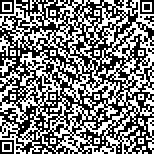徐欢岚,梁冠军,张何威,等.早期卧位踏车训练对造血干细胞移植患儿平衡能力和功能独立性的影响[J].中华物理医学与康复杂志,2024,46(3):232-236
扫码阅读全文

|
| 早期卧位踏车训练对造血干细胞移植患儿平衡能力和功能独立性的影响 |
|
| |
| DOI:10.3760/cma.j.issn.0254-1424.2024.03.008 |
| 中文关键词: 卧位踏车训练 干细胞移植 平衡功能 功能独立性 平衡 |
| 英文关键词: Recumbent treadmills training Stem cell transplantation Functional independence Balance |
| 基金项目: |
|
| 摘要点击次数: 3095 |
| 全文下载次数: 3613 |
| 中文摘要: |
| 目的 观察早期卧位踏车训练对造血干细胞移植(HSCT)患儿住院期间平衡能力和功能独立性的影响。 方法 回顾性分析苏州大学附属儿童医院血液科2020年2月至2022年8月收治进行HSCT治疗的儿童资料106例,但最终完成本研究病例69例,根据患儿HSCT出仓后是否采用卧位踏车训练,分为踏车组(32例)和非踏车组(37例)。2组患儿均行常规临床治疗和护理,并接受移植前后健康宣教,内容包含运动锻炼对移植患儿的益处和提供运动方案,运动方案的执行由家长监督完成,每日1次,每次20~30 min,训练频率为每周4~5 d;踏车组在此基础上于HSCT出仓后增加卧位踏车训练,每次30 min,5次/周,连续6周。分别于干预前和干预6周后(干预后),采用Berg平衡量表(BBS)、儿童功能独立性评定量表(WeeFIM)、儿童多维疲乏量表(PedsQLTM MFS)对2组患儿的平衡能力、功能独立性水平和疲乏度进行评估。 结果 干预训练6周后,踏车组患儿BBS评分[(31.73±4.88)分]、WeeFIM量表中的运动功能领域评分[(61.18±13.44)分]、WeeFIM量表总评分[(95.25±10.93)分]、PedsQLTM MFS评分中的一般疲乏维度得分[(61.86±10.41)分]、睡眠或休息疲乏维度得分[(60.36±6.90)分]均较组内干预前有显著改善(P<0.05),且改善程度优于非踏车组[(27.52±5.02)、(51.37±12.76)、(85.93±12.59)、(52.11±9.37)和(55.26±8.41)分],组间差异均有统计学意义(P<0.05)。 结论 早期卧位踏车训练可显著改善住院期间HSCT患儿的平衡功能,促进患儿的运动功能恢复。 |
| 英文摘要: |
| Objective To observe any effect of early recumbent treadmill training on the balance and functional independence during hospitalization of children who have received hematopoietic stem cell transplantation (HSCT). Methods This was a retrospective analysis of 106 children who had received HSCT. Sixty-nine of them were qualified for study. Of those, 32 had performed recumbent treadmill training and the other 37 had not. The children in both groups received routine clinical treatment and nursing care, and also health education advocating exercise and giving exercise programs before and after the transplantation. The daily exercise was conducted with the help of parents. It lasted 20 to 30 minutes each time, 4 or 5 times a week. The treadmill group additionally spent 30 minutes training on a recumbent treadmill 5 times a week for 6 weeks. Balance, functional independence and fatigue levels were quantified before and after the treatment using the Berg Balance Scale (BBS), the Functional Independence Measure for Children (WeeFIM) and the Pediatric Quality of Life Inventory-Multidimensional Fatigue Scale. Results After the 6 weeks, significant improvement was observed in the experimental group′s average BBS score, motor function domain score, total WeeFIM score, general fatigue, and sleep/rest fatigue. All were then significantly better than the non-treadmill group′s results. Conclusion Early recumbent treadmill training can promote the recovery of balance and functional independence of children after HSCT. |
|
查看全文
查看/发表评论 下载PDF阅读器 |
| 关闭 |